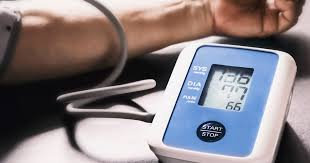Prostate cancer is a significant health concern for men. Understanding and addressing it can feel daunting for many. You may be unsure about when to start discussing screening with your doctor. Perhaps you wonder what “numbers” you should be tracking. Or why early detection truly makes a difference. This blog article aims to demystify prostate cancer screening. It highlights the critical role of regular check-ups and understanding key health indicators for proactive management.
This isn’t just about a single test. It’s about an ongoing conversation with your healthcare provider. Your personal risk factors and health metrics inform this talk. By familiarizing yourself with the “numbers” that matter, you empower yourself. You take control of your prostate health. This significantly improves outcomes if cancer is detected.
Understanding Prostate Cancer and Risk Factors
Understanding prostate cancer begins with knowing what it is. Certain factors can also raise your risk. This knowledge sets the stage for why regular screening is so vital.
What is Prostate Cancer?
Prostate cancer begins in the prostate gland. This is a small gland found only in men. It sits below the bladder and in front of the rectum. The prostate makes seminal fluid. This fluid nourishes and transports sperm. Cancer forms when cells in the prostate grow out of control. It is one of the most common cancers among men.
Key Risk Factors to Consider
Several factors can increase a man’s risk for prostate cancer. Knowing these can help you decide on screening. Some risks mean you might need screening sooner.
- Age: The risk of prostate cancer goes up with age. Most cases are detected in men over 65. It’s rare in men under 40.
- Family History: Your genes play a role. If your father or brother had prostate cancer, your risk is higher. This risk increases if they were diagnosed at a younger age.
- Race/Ethnicity: African American men face a higher risk. They also tend to get prostate cancer earlier. It often appears in a more aggressive form.
- Diet and Lifestyle: Some studies suggest diet may have an effect. A diet high in red meat or high-fat dairy might increase risk. Eating plenty of fruits and vegetables is always a good idea.
The Importance of Knowing Your Personal Risk
Identifying your risk factors is a key step. It helps you make informed choices about screening. Talk to your doctor about your family’s health history. Discuss your lifestyle too. Together, you can decide the best plan for your prostate health. Taking action helps manage your risk profile.
The Pillars of Prostate Cancer Screening: Key Numbers to Track
Prostate cancer screening relies on specific tests. These tests give you essential numbers to track. Monitoring these metrics is crucial for early detection.
Prostate-Specific Antigen (PSA) Test
The PSA test is a simple blood test. It measures the level of Prostate-Specific Antigen. PSA is a protein made by cells in the prostate gland. Both normal and cancer cells produce PSA.
- What PSA is and what it measures: PSA is found mainly in semen. A small amount is generally in your blood. Higher PSA levels in your blood can point to prostate problems. These include inflammation, enlargement, or cancer.
- Typical PSA ranges and what they mean: There is no single “normal” PSA number. Levels often rise with age. A PSA below 4 ng/mL was once considered normal. Now, doctors look at many factors.
- Factors that can affect PSA levels: Many things can change your PSA level. A prostate infection or inflammation can raise it. A recent ejaculation can also cause a temporary bump. Certain medical procedures can also impact it.
Digital Rectal Exam (DRE)
The Digital Rectal Exam (DRE) is another vital screening tool. Your doctor performs this exam. They check the prostate for any changes.
- How the DRE is performed: The doctor inserts a gloved, lubricated finger into the rectum. This allows them to feel the prostate gland.
- What a doctor looks for during a DRE: The doctor checks for lumps, hard spots, or changes in shape. They also feel for any unusual firmness or asymmetry. These could be signs of cancer.
- Its complementary role to the PSA test: The DRE works well with the PSA test. The PSA test measures a protein. The DRE is a physical check. Together, they give a fuller picture of prostate health.
Understanding Your Results: What Do the Numbers Mean?
Understanding your screening results is key. Your doctor will explain what your numbers mean for you. A “normal” range is not always simple.
- Baselines: It is smart to establish a personal baseline PSA level. This is your starting point. Future tests can then show any significant changes from this baseline.
- PSA velocity and density: Doctors sometimes look at PSA velocity. This is how fast your PSA level changes over time. PSA density considers the PSA level in relation to prostate size. Fast changes or high density can be concerning.
- When to be concerned: Your doctor will decide if further tests are needed. This depends on your PSA level, DRE findings, and risk factors. A rising PSA or an abnormal DRE might lead to more investigations.
The Power of Early Detection: Saving Lives Through Screening
Detecting prostate cancer early offers significant benefits. It often means improved treatment options. It also leads to a better quality of life.
Detecting Cancer at Its Earliest Stages
Screening aims to find cancer when it is small. It looks for cancer that is still contained within the prostate. At this early stage, symptoms are often absent.
- Early-stage symptoms (often absent): Prostate cancer often causes no symptoms when it first starts. Men might feel completely healthy.
- How screening can find cancer before symptoms appear: Regular PSA tests and DREs can spot issues. They find cancer before it grows large enough to cause problems. This allows for prompt action.
Improved Treatment Options and Outcomes
Early detection opens up more treatment possibilities. These treatments can be less invasive. They are often more effective too.
- Localized vs. metastatic cancer treatment differences: Localized cancer is only in the prostate. It can often be removed or treated with radiation. Metastatic cancer has spread. It requires more complex, systemic treatments. These might include hormone therapy or chemotherapy.
- Examples of successful early-stage treatment outcomes: Many men diagnosed early have very high survival rates. Their cancer is curable. Organizations like the American Cancer Society provide positive outlooks for early detection.
- For general statistics, organizations like the American Cancer Society or Prostate Cancer Foundation provide valuable insights. These groups show that finding prostate cancer early significantly improves the chance of successful outcomes.
Preserving Quality of Life
Catching cancer early helps minimize its impact. It can protect your overall health and well-being.
- Reducing the risk of metastasis and its complications: Early treatment reduces the chance of cancer spreading. This avoids complications from widespread disease.
- Minimizing potential side effects from more aggressive treatments: Treating cancer early can sometimes mean less aggressive approaches. These treatments often have fewer side effects. This helps maintain your daily life activities.
Navigating the Screening Process: A Practical Guide
Engaging in prostate cancer screening is a personal choice. This section gives practical advice. It helps you make informed decisions.
When to Start the Conversation with Your Doctor
Knowing when to talk to your doctor about screening is essential. Guidelines exist, but your personal risk matters most.
- General recommendations: For most men, discussions start around age 50. If you have a father or brother who had prostate cancer before age 65, start talking sooner. This might be at age 40 or 45.
- Tailoring the decision with your physician: Your doctor will consider your complete health history. They will help you decide the best time to begin screening. This is a shared decision.
What to Expect During a Screening Appointment
A screening visit is straightforward. Knowing what to expect can ease any worries.
- Discussing medical history and risk factors: Your doctor will ask about your health history. Be ready to share any family history of cancer.
- Undergoing PSA blood test and DRE: You will likely have a blood draw for the PSA test. The doctor will also perform the DRE. These are quick procedures.
- Understanding follow-up procedures: Your doctor will explain your results. If anything seems off, they will discuss next steps. This might include further tests.
Informed Decision-Making: Weighing the Pros and Cons
Making an informed choice means looking at both sides. While early detection is powerful, it’s good to know all outcomes.
- Discussing potential false positives and false negatives: A false positive means the test says you have cancer, but you don’t. A false negative means it misses cancer. These are not common, but can happen.
- Understanding the implications of active surveillance versus immediate treatment: If low-risk cancer is found, active surveillance might be an option. This means watching the cancer closely. It avoids immediate treatment.
- The role of shared decision-making with your healthcare provider: Your doctor will guide you. You should feel comfortable asking questions. Together, you decide the best path for your health.
Expert Insights and Real-World Impact
Medical professionals strongly support regular screening. Their advice highlights its importance. Many men have benefited from early detection.
Advice from Urologists and Oncologists
Doctors who treat prostate cancer see the difference. They often share a standard message about screening.
- “Regular screening allows us to catch many prostate cancers when they are still confined to the prostate,” states Dr. Emily Chen, a leading urologist. “This significantly improves the chances of successful treatment.”
- “Understanding your personal risk factors is the first step in a proactive approach to prostate health,” adds Dr. Mark Johnson, an oncologist. “Don’t wait for symptoms.”
Stories of Early Detection Success
Many men have positive stories thanks to screening. Their proactive choices led to better outcomes. Men who screened regularly often faced less aggressive treatments. They experienced better recovery too. This proactive health management brings peace of mind. It shows the real power of knowing your numbers.
Taking Action for Your Prostate Health
Prostate health is a key part of men’s well-being. Regular screening and awareness are your best tools. Knowing your numbers empowers you.
Key Takeaways for Proactive Prostate Health
Remember these crucial messages for your prostate health:
- Screening is a vital tool for finding prostate cancer early.
- Know your personal risk factors.
- Understand the numbers that matter, like your PSA and DRE results.
- Early detection often leads to better outcomes and preserved quality of life.
Your Next Steps: Schedule a Conversation
Don’t delay protecting your prostate health. Take action today.
- Actionable tip: Schedule a discussion with your doctor about prostate cancer screening.
- Actionable tip: Be prepared to discuss your family history and any concerns you have.
- Actionable tip: Your prostate health is worth it. Make that appointment now.
Discover more from Healthinfo24.com
Subscribe to get the latest posts sent to your email.




Marshall1698
https://shorturl.fm/zvkYm